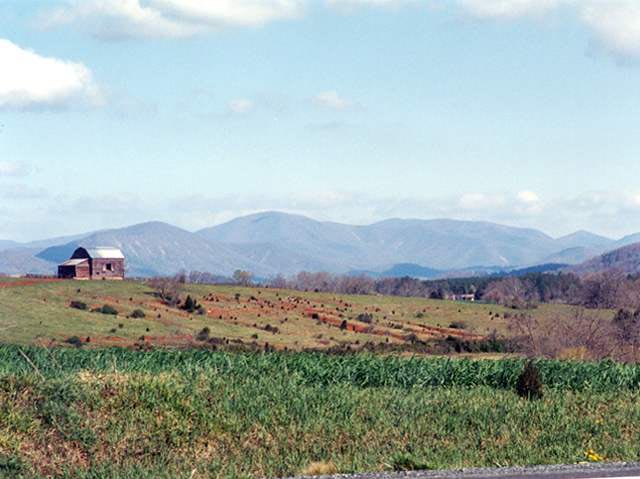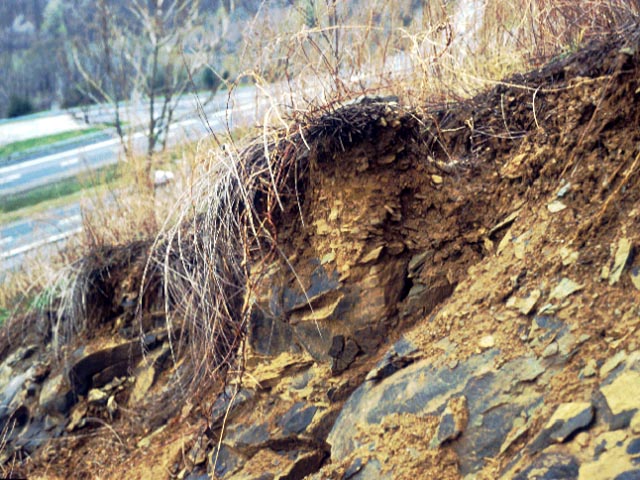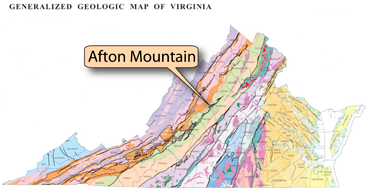
Blue Ridge Physiography: Characteristic Features (Part 1)
• The Blue Ridge has very high relief with sharp peaks and deep valleys underlain by crystalline rocks.
the difference in elevation between the highest and lowet points of a given region

The Blue Ridge is the highest, most mountainous part of the state. Tourists flock here to see the spectacular scenery from the Blue Ridge Parkway and the Skyline Drive. (Photograph by Stan johnson)
• Thin, rocky soils are present that creep slowly downhill.

 Above: Typical thin, rocky soil in the Blue Ridge at Afton Mountain. Loose, rocky material that moves slowly down a slope under the influence of gravity is called colluvium. Heavy rains can turn colluvium into a debris flow, an important environmental problem in the Blue Ridge. (Photograph by Robert Whisonant)
Above: Typical thin, rocky soil in the Blue Ridge at Afton Mountain. Loose, rocky material that moves slowly down a slope under the influence of gravity is called colluvium. Heavy rains can turn colluvium into a debris flow, an important environmental problem in the Blue Ridge. (Photograph by Robert Whisonant)